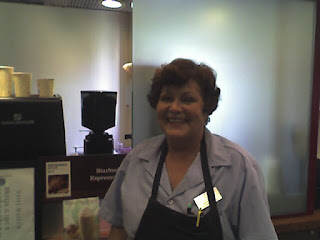These are all good things and they change students' perception of Olin Library -- they are ready to give us another look. But now we have to make some more fundamental changes to the library and, of course, when I say library I don't just mean the building that houses the personnel, the print based collection, and lots of study space. I mean the library as a physical space, an online presence, a collection of information resources, services, and relationships -- both online and the physical world. OK. So what might those changes be?
- Integrating the library's educational role more effectively into the curriculum so that we work in partnership with the faculty to help students become more information literate by the time they graduate, and doing that online (synchronously and asynchronously) and in the physical world.
- Continuing the hard work of making sure our customer services are consistently excellent and that our personnel are not undermined by poor planning, space, or procedures.
- Linking all our digital resources so a document in one database is accessible from any other.
- Linking our digital resources and services out from the library to digital places where the users are: Blackboard, the College website, Google, Facebook, their cell phone, campus plasma screens, etc.
- Building alliances with other academic support organizations (IT, the Writing Center, TJ's, etc.) so that the truly integrated nature of research, writing, and dissemination is supported by our services, not hindered by them, and making sure such alliances are happening both online and in the physical world.
- Creating extra-curricula reasons for students and faculty to spend time in the library, or online at the library: poetry slams, reading groups, exhibits, workshops, seminars, events of all kinds. At the same time, when it is useful, integrating the library's resources into other events happening around campus.
All of these are more difficult to do, are more expensive to implement, and in some cases mean a change in our mindsets. It is like a row boat. With the furniture, cafe, and hours we kicked off from the shore. Now we have to set the oars in place and bend our backs to rowing. It is hard work, but you get further.



